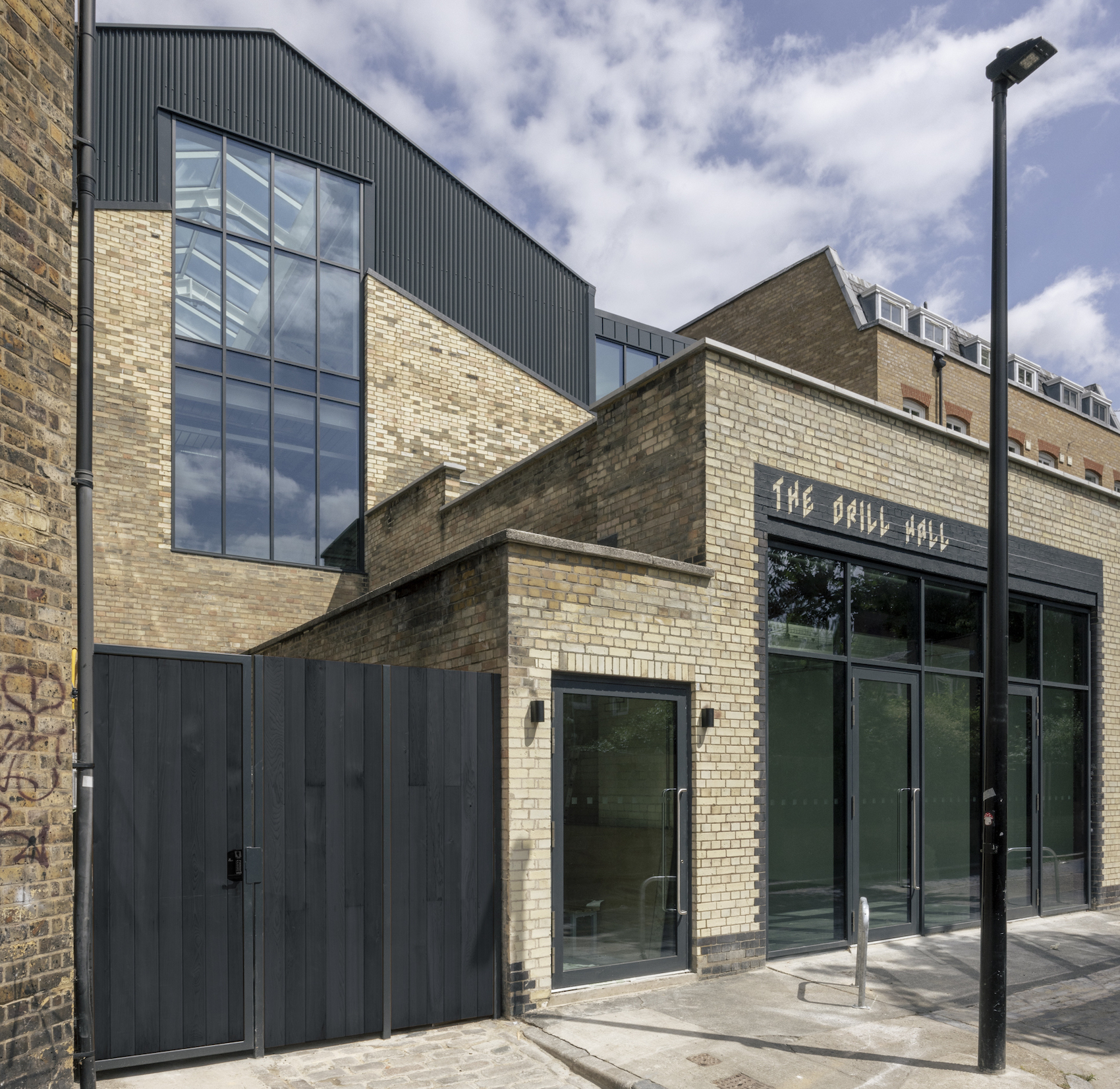HUT Architecture has sympathetically transformed a 1930s army drill hall into co-working offices, a café, and apartments in the heart of London’s Mile End.
Photos
Billy Bolton
Originally constructed in 1939 for the Royal Army Service Corps 1st Anti-Aircraft Division, the former drill hall in Mile End, east London, has had many lives – as a storage facility, mechanics yard, and even a fashion shoot location. HUT Architecture’s ambitious, mixed-use development combines workspaces with social areas and residential units, breathing new life into the building and the surrounding context.
The design retains and celebrates the robust character of the original structure. Crumbling brick walls and exposed steelwork are left uncovered, with new additions deliberately contrasting in tone and materiality. New concrete and steel elements are unapologetically direct, often abutting the old in bold, unpolished junctions. Colours sampled from the original fabric are reintroduced to support wayfinding, while materials such as folded sheet metal cladding reference the building’s utilitarian past.
Daylight is brought deep into the expansive plan through a combination of punched voids, rooflights, lightwells and translucent blocks. The resulting interplay of light and volume highlights the spatial generosity of the original drill hall, while providing visual links across the interior. New planting areas – introduced on flat roofs and within lightwells – act as green oases and help manage rainwater, while encouraging biodiversity.
The building’s fabric has been thermally upgraded to meet BREEAM ‘Very Good’ and EPC B standards. Sustainability is embedded through a pragmatic approach to reuse, and a focus on performance without unnecessary complexity.
Nine apartments have been added within an extended volume facing Mile End Road, located above a street-level café. The active frontage supports local footfall and contributes to Whitechapel’s ‘15-minute city’ vision. A new entrance improves the streetscape and cycle route, restoring the drill hall’s civic presence, while layering in new functions that secure its long-term future within the neighbourhood.
HUT Architecture Associate Todd Courtney commented: “Drawing on our substantial heritage expertise, the transformation showcases the rich character of the original building, while making bold interventions that safeguard its future as a viable workplace.”
Additional Images
Credits
Architect
HUT Architecture
Structural engineer
Constant Engineers
Services engineer
London MEP
Client
Mantra Hay
Source: Architecture Today







